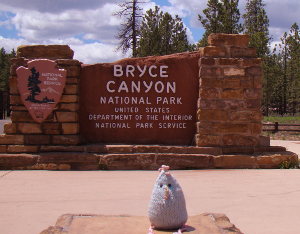
Chicken at the entrance of Bryce Canyon
Bryce Canyon, the home of the Hoodoos! Pillars of rock sculpted into fantastic shapes by the power of erosion. Bryce Canyon is like no other place in the world. It shows in a unique way the powerful effects of erosion. 10 million years ago, forces deep beneath the surface moved the massive blocks known as Paunsaugunt and Table Cliffs plateaus. The layers of rock on the Table Cliffs now tower over 2000 feet above their corresponding layers of the Paunsaugunt. Nature is a poweful thing!
The power of water: water erodes rock in different ways. Mechanically and chemically. Scouring, abrading and gullying occur when fast-moving water scrapes its silt, gravel and rock debris against firmer bedrock. But, water also dissolves the cements holding the rock together, leaving loose grains to wash away. In Bryce Canyon, we can see the power of water erosion in all its splendor!
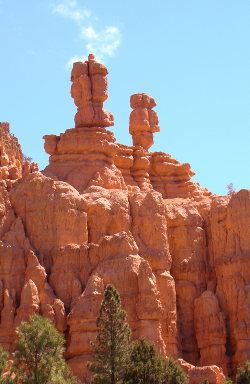
Hoodoos seen on scenic road 12 leading to Bryce Canyon.
As gullies widen into canyons, fins become exposed to more erosion at their vertical cracks.
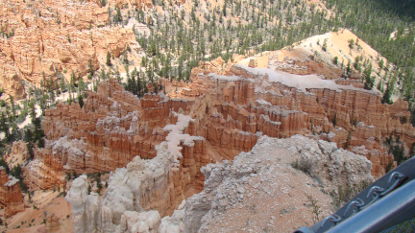
The top layer looks like snow
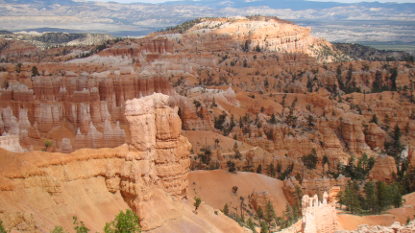
Hoodoos and fins
As freezing water expands within the cracks in winter, it peels off layers and carves out vertical hoodoos.
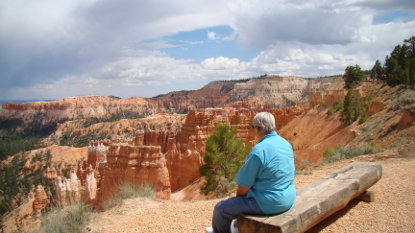
Bear, fascinated by the scenery
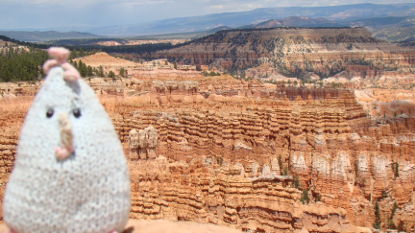
Chicken was very impressed!
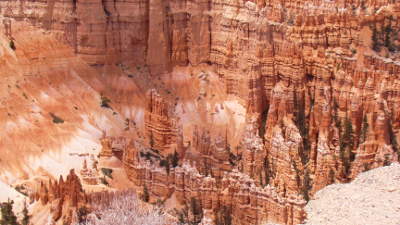
More hoodoos and fins
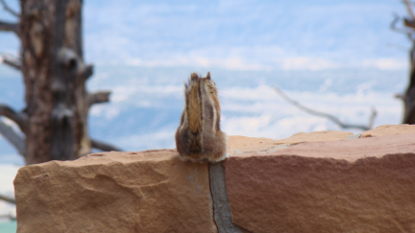
Humans are not the only ones impressed by the view!
Ebenezer Bryce gave his name to the park, his land backed up to the canyon. It became known as Bryce’s canyon. When asked what he thought of all the hoodoos and strange formations behind his land, the pragmatic man replied: “that’s a bad place to loose a cow”.
Bryce Canyon gained its National Park status in 1928.
May 28th, 2009 at 8:46 PM
Do a voodoo on the Hoo-Hoo? LOL.
May 28th, 2009 at 10:33 PM
All I saw from humans and animals were their backs. The scenery is just beautiful and you take lovely pictures.